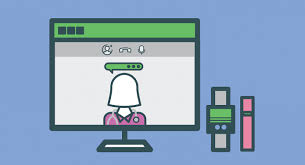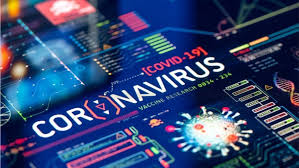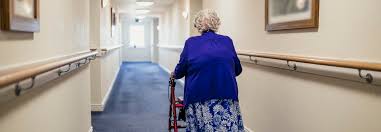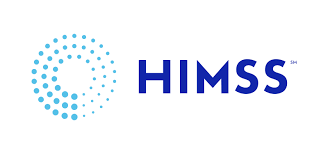 The world is spinning from the events of March 2020. At the beginning of the month, it made sense to publish a Market Overview about tech for older adults that did not link all tech to Covid-19, and by the end of the month every single news item, announced business initiative, investor prediction, startup messaging, university project, and technology topic was only about Covid-19. It’s almost quaint to look at where the month began – publishing the 2020 Market Overview of Technology for Aging (on March 5). The technologies noted are as relevant today as they were on March 5 – however, their application as the list of press releases notes, may be different. Telehealth is suddenly as critical as it always should have been. Smart home and enablement of remote interactions) matters more than it ever has. From the month:
The world is spinning from the events of March 2020. At the beginning of the month, it made sense to publish a Market Overview about tech for older adults that did not link all tech to Covid-19, and by the end of the month every single news item, announced business initiative, investor prediction, startup messaging, university project, and technology topic was only about Covid-19. It’s almost quaint to look at where the month began – publishing the 2020 Market Overview of Technology for Aging (on March 5). The technologies noted are as relevant today as they were on March 5 – however, their application as the list of press releases notes, may be different. Telehealth is suddenly as critical as it always should have been. Smart home and enablement of remote interactions) matters more than it ever has. From the month:
Technology for older adults has become mainstream. The 2020 Market Overview of Technology for Aging is now online. This 2020 version reflects the growing market interest in the boomer-senior demographic and its position in the Longevity Economy. This tech market is less about products specifically designed for older adults and more about smarter marketing of many consumer offerings that could be useful to them. This includes smartphones, tablets, smart home technology, Voice First hardware and virtual assistants, and in-home sensors. Each of those devices is enabled for older adults by either more targeted marketing and packaging, enabling software, or bundling into training and solutions for in-home caregiving and/or healthcare. this forward-looking study is illustrated with descriptive graphics and includes more than 25 new offerings. Read more.
Technology innovation from HIMSS 2020. The event was canceled – but the briefings went on to shed a light on what’s new. When a conference of the scale of the largest annual health IT event HIMSS (possible attendance of 45,000 compared to 2019) is canceled, it sends shudders through the world of the entrepreneurs and providers they wanted to meet, solving thorny care delivery problems, finding customers and partners, gaining visibility to unusual and compelling solutions. And it created a big challenge for the multiple PR firms engaged to help create that visibility to innovation in care. Following cancellation, phone calls replaced nearly all 10 scheduled in-person meetings. In addition, HIMSS is offering a digital version of HIMSS. Read more.
Coronavirus and the impact on residents of senior living. Consider the directives aimed at senior living communities. Rant on. The Washington State nursing home deaths and the virus presence in multiple nursing homes have an immediate result. Nursing home visits are now restricted nationwide – and it appears, despite lack of clarity, that also means assisted living – the combination spanning 2.5 million nationally. Most people look at the lock-downs as completely sensible, preventing the spread of the virus to such a vulnerable population. And worker shortages already plaguing this industry are expected to worsen as workers call in sick, out of fear for themselves or their families. Read more.
TElehealth, HIPAA compliance and innovation tracking. The coronavirus pandemic has prompted instant behavior and tech changes. And not just about hand washing and social distancing. For the past two days, it’s apparent that the seemingly forever slow growth of telehealth adoption has entered a new, “When can I have that? Yesterday?” phase. This applies to caring for and treating the 2.5 million in senior living communities, including nursing homes. Some senior living providers have been ahead of the game for some time with telehealth, like Asbury Communities and Holiday Retirement -- offering services for residents at times when physicians cannot be on site. But the interest and use of telehealth in senior living has been accelerating since April 2019, when Medicare Advantage plans began covering it. And further, when senior living companies were enabled to provide their own Medicare advantage plans, that piqued more interest in telehealth. All that's left is to install the connectivity to make it effective. Read more.
Remote care technologies – what have they been, what will they be? This past week offers updates to services, policy, and practice. Expect more announcements moving forward, but matching reimbursement for telehealth with in-person visits was a big deal. Many other changes have been put in place, eliminating co-pays, adding coverage for telehealth for those without insurance, and many others many of them state-by-state (see Florida and California, for example). Senior living companies are readying telehealth services (see Holiday Retirement) and no doubt more will follow. Read more.
from Tips For Aging In Place https://www.ageinplacetech.com/blog/five-technology-and-health-blogs-march-2020
 This past week offers updates to services, policy, and practice. Expect more announcements moving forward, but
This past week offers updates to services, policy, and practice. Expect more announcements moving forward, but  The coronavirus pandemic has prompted instant behavior and tech changes. And not just about hand washing and social distancing. For the past two days, it’s apparent that the seemingly forever slow growth of telehealth adoption has entered a new, “When can I have that? Yesterday?” phase. This applies to caring for and treating the 2.5 million in senior living communities, including nursing homes. Some senior living providers have been ahead of the game for some time with telehealth, like
The coronavirus pandemic has prompted instant behavior and tech changes. And not just about hand washing and social distancing. For the past two days, it’s apparent that the seemingly forever slow growth of telehealth adoption has entered a new, “When can I have that? Yesterday?” phase. This applies to caring for and treating the 2.5 million in senior living communities, including nursing homes. Some senior living providers have been ahead of the game for some time with telehealth, like  Consider the directives aimed at senior living communities. Rant on. The
Consider the directives aimed at senior living communities. Rant on. The  HIMSS was canceled – but the briefings went on to shed a light on what’s new. When a conference of the scale of the largest annual health IT event HIMSS (possible attendance of 45,000 compared to
HIMSS was canceled – but the briefings went on to shed a light on what’s new. When a conference of the scale of the largest annual health IT event HIMSS (possible attendance of 45,000 compared to  echnology for older adults has become mainstream. The
echnology for older adults has become mainstream. The